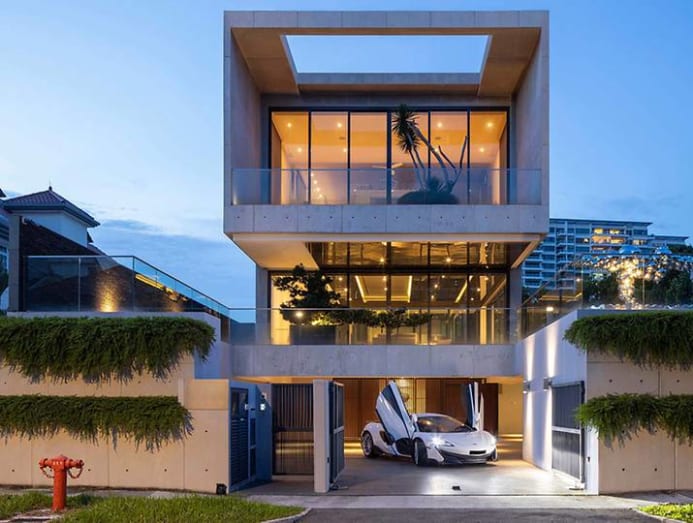A three-storey family home in Singapore filled with local, contemporary art
After upgrading from a semi-detached house to a bungalow, a homeowner took the opportunity to start a collection of works by local artists, which he enjoys together with his wife and two daughters.
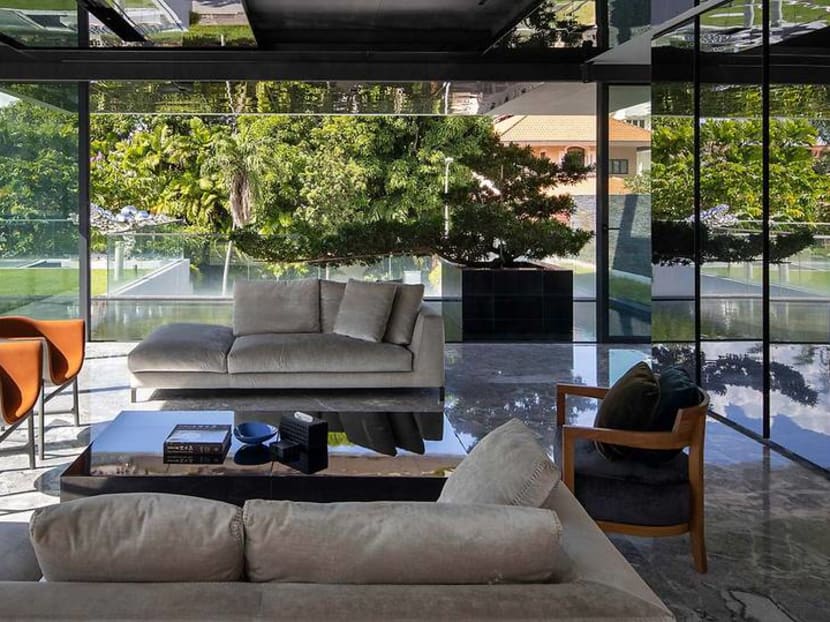
The house is designed by ZA Architects, who had also designed the owner’s former home. (Photo: SEECK Photography)
It is not often that when visiting a home, the owner hands you a printed brochure that details the art collection in his house. But it was the case for this detached bungalow that belongs to the CEO of a boutique advisory firm. He is a firm supporter of the local, contemporary art scene and wanted his new house to be a canvas for this cause.
READ> Singapore street artist Yip Yew Chong’s first series of nostalgic paintings sells out in a flash
The artwork in this home is varied, and not presented in a sterile manner like in a white box gallery. Instead, both art and architecture fuse into a sleek but also inviting environment. The house is designed by ZA Architects, who had also designed the owner’s former home.
“We got to know the owners well during the construction of the first house and realised that they were pretty open-minded about ideas on spatial design and materials. So when the opportunity came to design their next house, we were prepared to offer a different design approach, which reflects their improved standard of living and lifestyle,” said Stan Lee, a partner at the Singapore-based firm.
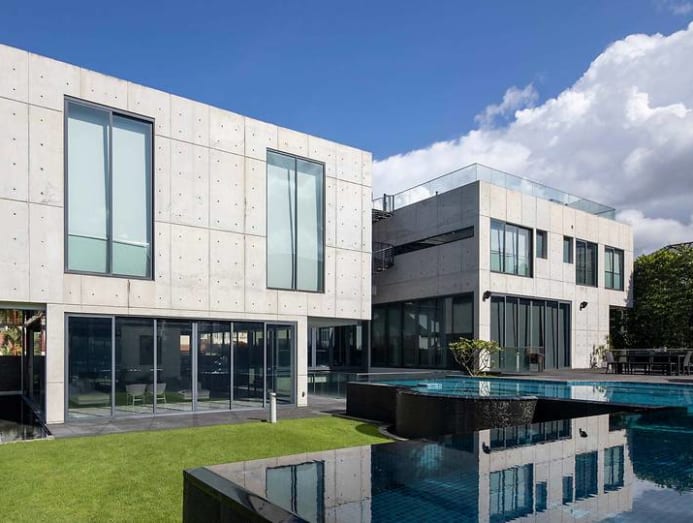
For the former home, he was engaged to renovate a semi-detached house. The exterior was pleasant – though none too exciting – with cream-coloured paint and timber accents.
This new house is a detached bungalow on 1,168sqm of land. Apart from larger rooms and communal areas, it also gives the occupants more space for exercise and relaxation amenities.
“During the design process, the owner sought our opinion on the pieces of art and sculpture they intended to purchase for the new house. We then decided to use off-form concrete, steel and glass, hoping to create contrast and accentuate these art pieces where appropriate inside and outside the house,” said Lee.
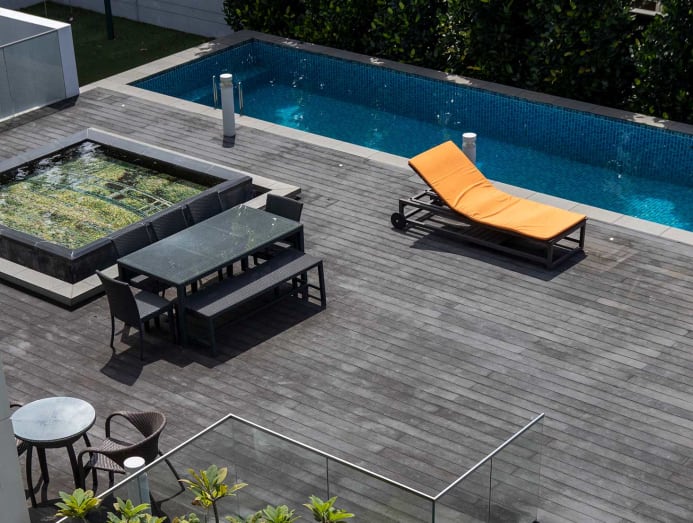
The owner lives here with his wife and two teenage daughters.
“I have a small family so I didn’t need to maximise the gross floor area. Half the land is for recreation,” he shared. The division of land reads literally in plan, with the built-up spaces running down one side of the land’s length, and the pool and garden down the other.
At the end of the garden is a swing set he built for his daughters. The pool has a 30m-long side for serious laps as well as a section that extends toward the house with a Jacuzzi and shallower ring. When the daughters were young, they spent plenty of time in the latter, looked upon by the adults from the pool deck.
READ> In Singapore, this father built a family home for his three daughters to enjoy
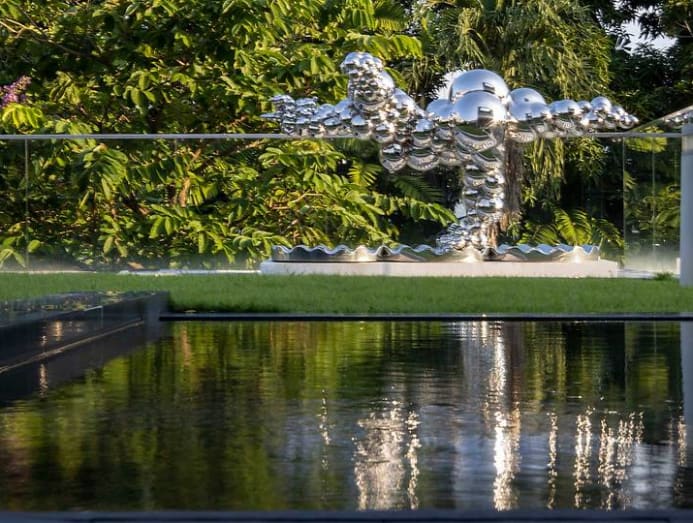
In the garden is local artist Yeo Chee Kiong’s Pet sculpture from his Ideal Lady Series. The cluster of stainless steel bubbles appears to levitate, and can be seen from the street through glass balustrades. The metallic shine and rotund forms contrast with the lush landscape and boxy architecture.
The garden and main parts of the house are raised above a basement that meets the road level. This gives the occupants more privacy. In the eight-car garage, the owner highlighted a gym corner.
“My daughters are both basketball players and I do quite a fair bit of sports,” he said of this well-used part of the home.
Lee divided the house into a front and rear bock. The former stacks a basement entertainment room, the living room and master bedroom. The latter tucks a guest room into the basement, a dining and kitchen on the first storey and the daughters’ bedrooms and a shared study on the second storey.
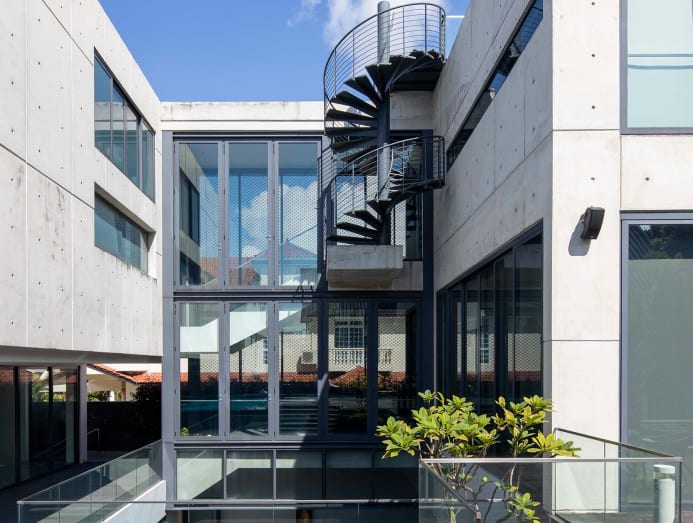
In between the two blocks is a landscaped courtyard in the basement. The owner initially wanted to construct a large treehouse here for his daughters but the fengshui master said it was inauspicious so he changed it into a Zen garden with a chessboard aesthetic. It brings plenty of daylight into the facing guest room and entertainment room, as well as provides pleasant views to admire from above.
A mesh-and-glass corridor separates the living room from the dining room on the first floor. This gives the occupants a dose of sunshine, green views and a panorama of garden art each time they traverse between the spaces. Two spiral staircases – one from the basement and another to the roof terrace – amplify this ambulatory movement.
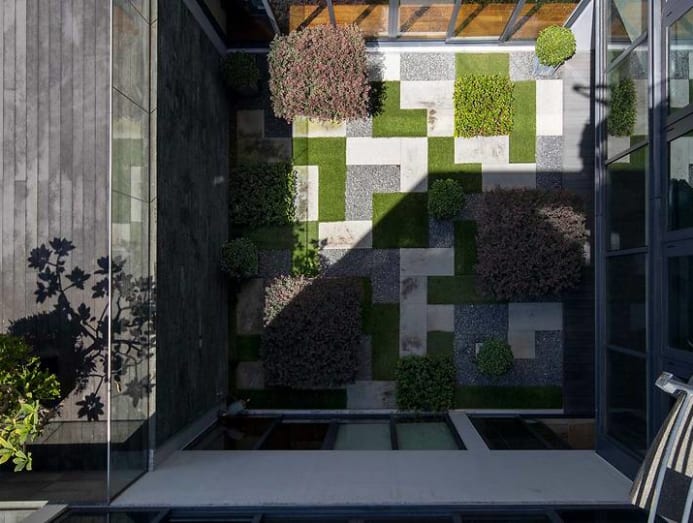
“The external steel spiral staircases are used to mediate levels and more importantly, to add interest as an external architectural element. Monochrome and greyscale marble and timber for the floors and cabinetry are used extensively in the interior,” said Lee on the minimal palette.
In the garage behind a screened foyer, heralded by April Ng’s whimsical drawing Creating Space, one door opens to the entertainment room, and another to a staircase that leads to the first storey.
Singapore Cultural Medallion-winner Tan Swie Hian’s calligraphic work Dragon Cypress anchors the start of this staircase, complete with a plaque on the wall describing the piece like in an art gallery as part of the owner’s desire to share with guests his interests.
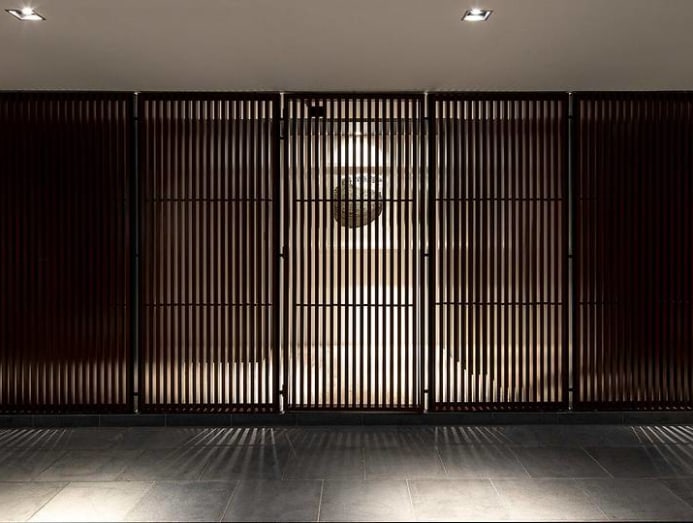
In the entertainment room is another work by Tan Swie Hian. Sinstral Conch Stupa is the first of many Buddhist art pieces that the owner would collect over the years for aesthetic rather than religious purposes. Its colourful palette enlivens the room, just like Yeo Chee Kiong’s anime-inspired Future Weapon, Missile Mazinger artwork across the space.
While in the former home, the living room was a double-volume space and the master bedroom of single-storey height, the inverse happens here. The living room height is slightly compressed in order to comply with the Urban Redevelopment Authority’s guidelines on the overall height of the house.
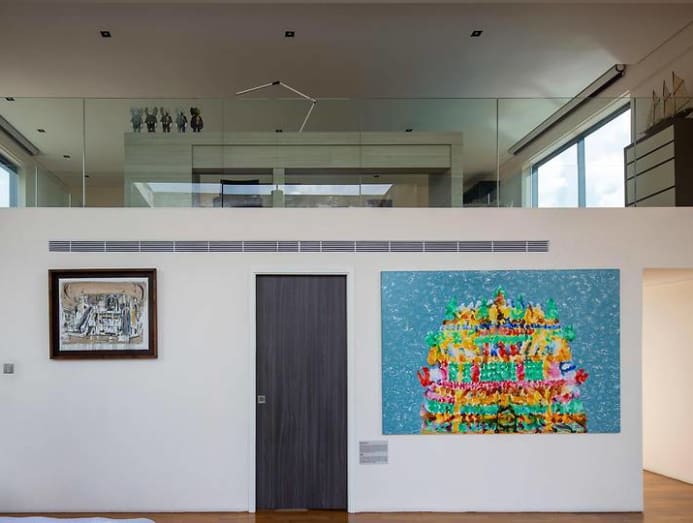
Lee compensates this with reflections from a water feature in the balcony and reflective ceilings, both of which give the illusion of spaciousness. From the planter in the pond arises a large Bonsai plant that the owner views as another work of art, and which he took a long time to find.
This strategy of expanding space upward continues in the 5m-high master bedroom. Here, Lee inserted a loft containing the owner’s study. Next to the bed, a pond in the balcony reflects the sky through an aperture in the ceiling.
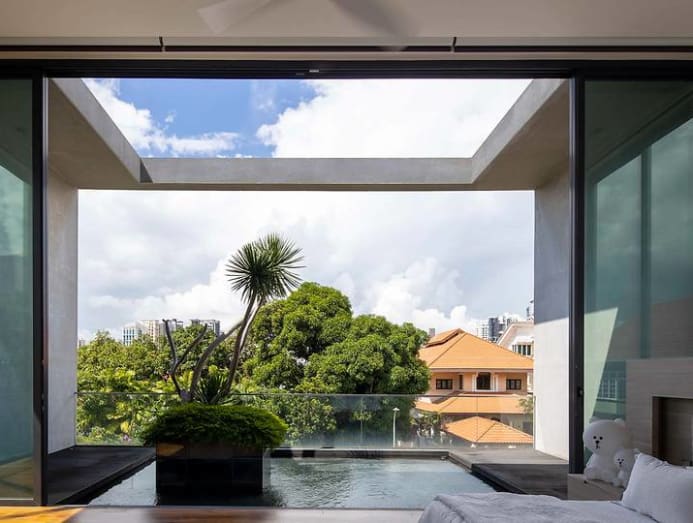
While the placement of several water elements around the house was for fengshui reasons, this particular feature was purely for the owner’s appreciation. “I like water, and enjoy sitting outside to enjoy the feature,” he shared. The abundance of water gives the house a tranquil atmosphere.
The roof terrace is the best place to view another water feature with a mosaic artwork in the garden.
“The idea came about after the owner visited Japanese architect Tadao Ando’s Kyoto Garden of Fine Arts. He selected Claude Monet’s Bridge over a Pond of Water Lilies as [the image for] the underwater mosaic artwork. Its position just next to the pool and outdoor dining area is a conversation piece when the owners host dinners,” said Lee.
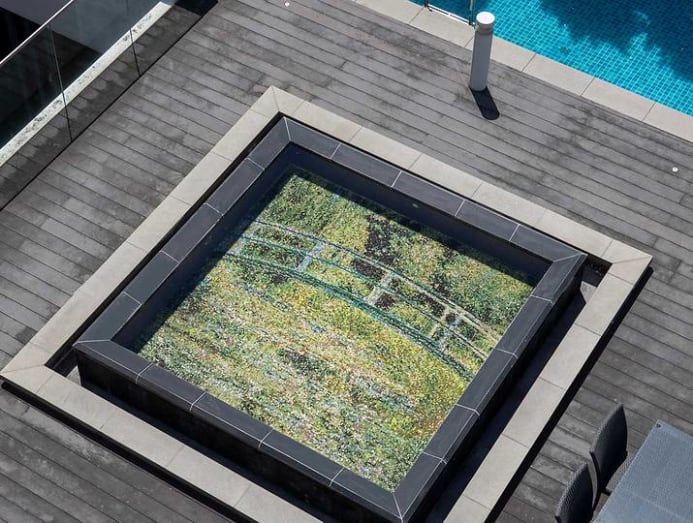
This water feature was the first piece of art in the home. “After the owner moved in and got a sense of the spaces, more sculptures and paintings were introduced at strategic locations,” said Lee.
The house is not filled to the brim with art, but each is thoughtfully placed and is an interesting commentary on Singapore’s social, historical and physical narrative. It is easy to understand how guests might arrive enticed by the bold architecture but leave with a deeper appreciation of local art.
